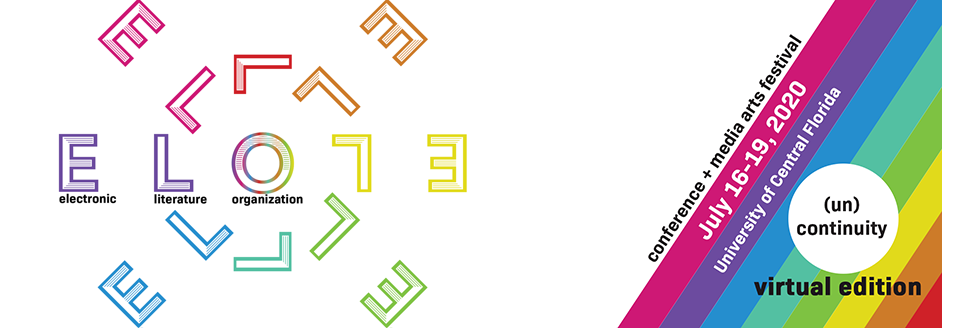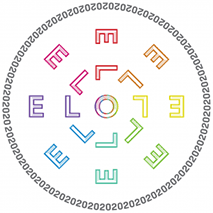Proposal Title
Loading...
Submission Type
Conference Talk - Individual
Abstract
K-pop has become increasingly mainstream within Western media and in an analysis done by music data analytics company, Next Big Sound, found that K-pop fans are some of the most active users on twitter. In 2018, Next Big Sound, who measures popularity through the amount of interactions that fans have with a member’s twitter account, “saw over 24 million [interactions with Exo], more than 14,000 times what’s expected. [Exo is] followed closely by BTS, who have a Twitter audience that’s about five times the size of Exo’s. Over the past two months, BTS saw over 36 million mentions […]” (Blake). The size of the fandom on twitter, coupled with a need for a slash platform after new NSFW regulations on tumblr, has led to an increase of twitter fics and social media AUs in the K-pop fandoms, which have opened new avenues for interactive fiction and social communities on the website.
This paper analyzes the rise of the twitter fic in K-pop twitter fandoms and develops a scholarly discussion about these fics. Like its predecessor the text fic, twitter fics are social media (socmed) alternative universe (AU) fics that imagine a conversation (through direct messages, “at’s,” replies, subtweets, and quote tweeting) between a pairing, most often a slash pairing in the K-pop fandom. Chatfic began as AUs where two characters may use chatrooms to talk to one another, and often spawned into role-playing situations where fans would become the characters. These AUs allowed for fans to interact with the genre of fanfiction in a new way, and as socmed AUs often include fake text message screen shots or fan made manips, develop online literacy skills (McWilliams et al.; Lammers; Black, “Access and Affiliation”; Black, “Fanfiction Writing”). Fans further built their skills in telling serialized narratives and interactive storytelling, which led to the modern conception of socmed AUs.
Further analyzing the interactive storytelling used in socmed AU pieces, this paper builds off of work done by Booth and Glassner, who have studied the roles of interactive storytelling in the fandom communities. This paper furthers their arguments by looking at the role of twitter polls in the decisions of determining where a fic goes. A popular BTS socmed AU, Outcast, used the function of polls to determine what would happen next to the band members, similar to the ways that a quest functions in interactive storytelling (Glassner; Booth). These socmed AUs, like the wikis that Booth discusses, are places to develop plotlines within a community or completely change the storyline; thus creating new examples of non-linear and noncontinuous storytelling, which allows for new understanding of the expanding genre of fic amongst fans.
“Quote Tweet, Don’t Reply!”: The History of K-Pop Fandoms’ Twitter AUs and Roots in Interactive Storytelling
K-pop has become increasingly mainstream within Western media and in an analysis done by music data analytics company, Next Big Sound, found that K-pop fans are some of the most active users on twitter. In 2018, Next Big Sound, who measures popularity through the amount of interactions that fans have with a member’s twitter account, “saw over 24 million [interactions with Exo], more than 14,000 times what’s expected. [Exo is] followed closely by BTS, who have a Twitter audience that’s about five times the size of Exo’s. Over the past two months, BTS saw over 36 million mentions […]” (Blake). The size of the fandom on twitter, coupled with a need for a slash platform after new NSFW regulations on tumblr, has led to an increase of twitter fics and social media AUs in the K-pop fandoms, which have opened new avenues for interactive fiction and social communities on the website.
This paper analyzes the rise of the twitter fic in K-pop twitter fandoms and develops a scholarly discussion about these fics. Like its predecessor the text fic, twitter fics are social media (socmed) alternative universe (AU) fics that imagine a conversation (through direct messages, “at’s,” replies, subtweets, and quote tweeting) between a pairing, most often a slash pairing in the K-pop fandom. Chatfic began as AUs where two characters may use chatrooms to talk to one another, and often spawned into role-playing situations where fans would become the characters. These AUs allowed for fans to interact with the genre of fanfiction in a new way, and as socmed AUs often include fake text message screen shots or fan made manips, develop online literacy skills (McWilliams et al.; Lammers; Black, “Access and Affiliation”; Black, “Fanfiction Writing”). Fans further built their skills in telling serialized narratives and interactive storytelling, which led to the modern conception of socmed AUs.
Further analyzing the interactive storytelling used in socmed AU pieces, this paper builds off of work done by Booth and Glassner, who have studied the roles of interactive storytelling in the fandom communities. This paper furthers their arguments by looking at the role of twitter polls in the decisions of determining where a fic goes. A popular BTS socmed AU, Outcast, used the function of polls to determine what would happen next to the band members, similar to the ways that a quest functions in interactive storytelling (Glassner; Booth). These socmed AUs, like the wikis that Booth discusses, are places to develop plotlines within a community or completely change the storyline; thus creating new examples of non-linear and noncontinuous storytelling, which allows for new understanding of the expanding genre of fic amongst fans.




Bio
Lauren Rouse is a doctoral student at the University of Central Florida. Her research focuses on fans and fandom, particularly the rhetoric and discourses they use regarding mental illness, disability, and neurodiversity. More information can be found at http://www.laurenrouse.net/